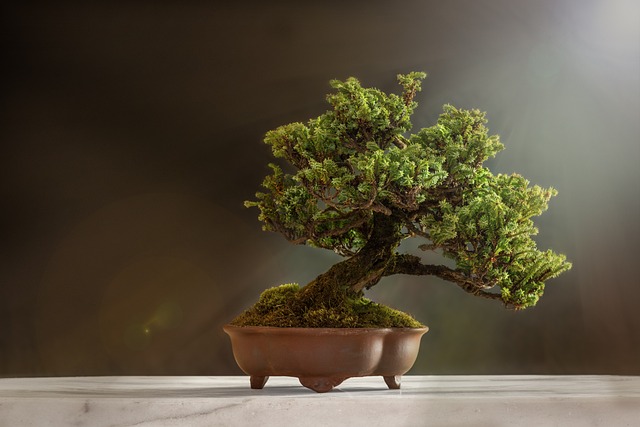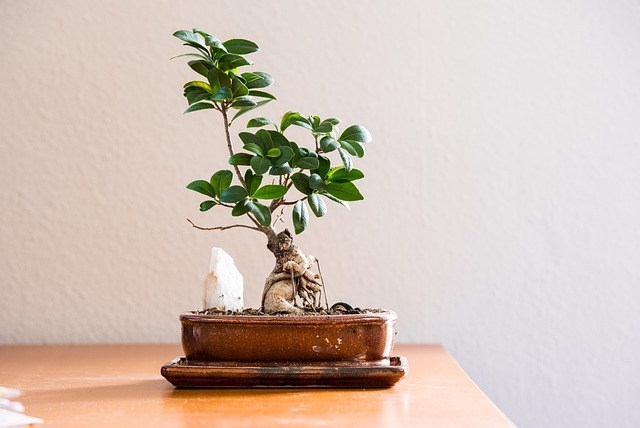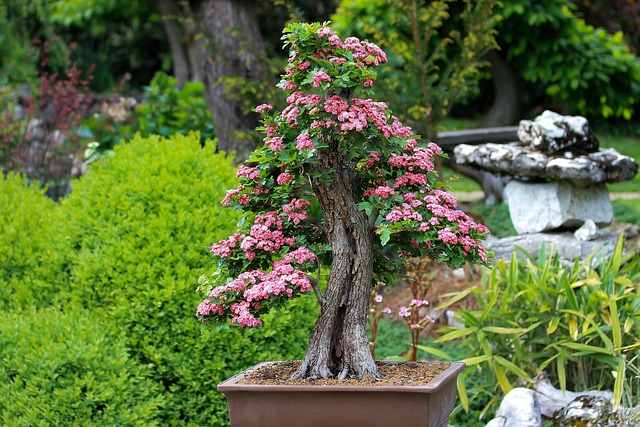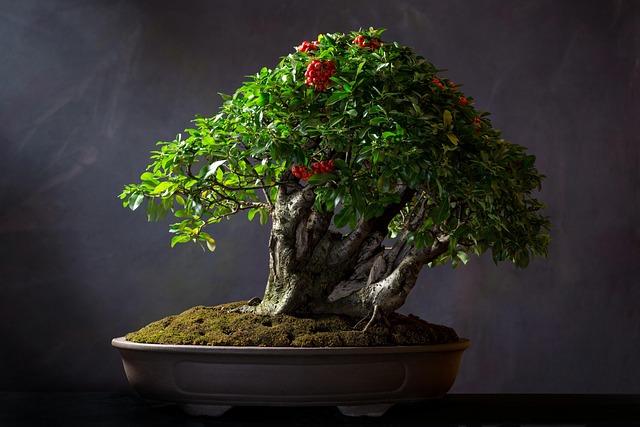Japanese bonsai represents one of the world’s most sophisticated horticultural art forms, where centuries of cultural tradition meet deep observation of nature. Unlike simple container gardening, bonsai styling follows specific traditional forms that capture the essence of how trees grow and adapt in natural environments. Each style tells a unique story of survival, growth, and the eternal relationship between trees and their surroundings.
The art of Japanese bonsai styling emerged from careful observation of trees in their natural habitats – from towering mountains to coastal cliffs, from dense forests to windswept plains. These traditional forms serve as both artistic guidelines and philosophical expressions of nature’s beauty, creating miniature landscapes that evoke powerful emotions and memories.
- The Essence of Japanese Bonsai Styles: Nature Captured in Miniature
- Traditional Japanese Bonsai Classification System
- Primary Upright Styles: The Foundation of Bonsai Art
- Dramatic Cascading Styles: Cliff-Dwelling Trees
- Specialized Japanese Bonsai Styles
- Cultural Philosophy Behind Japanese Bonsai Styles
- Choosing the Right Style for Your Tree
- Conclusion
The Essence of Japanese Bonsai Styles: Nature Captured in Miniature

Japanese bonsai styles are fundamentally different from arbitrary plant shaping. They represent a sophisticated classification system that mirrors how trees actually grow in nature when subjected to various environmental conditions. Each style captures a specific moment or condition in a tree’s natural life cycle.
The philosophy behind these styles goes beyond mere aesthetics. Traditional Japanese bonsai seeks to create harmony between the artist’s vision and nature’s inherent patterns. When you observe a well-styled bonsai, you should be able to immediately understand the environmental story it tells – whether it’s a tree that grew in ideal conditions, one that battled against harsh winds, or one that clung to a cliff face for survival.
This approach to styling requires deep understanding of both horticultural science and artistic principles. The bonsai artist must consider not only how the tree looks today, but how it will develop over years and decades, always maintaining the natural character that makes each style recognizable and meaningful.
Traditional Japanese Bonsai Classification System
The Japanese bonsai tradition has developed a comprehensive classification system over more than a thousand years. This system categorizes styles based on several key criteria: trunk orientation, number of trunks, root placement, and special characteristics.
The most fundamental classification relates to trunk orientation – how the main trunk grows in relation to the container and the ground. This basic classification includes upright styles, slanted styles, and cascade styles, each representing different natural growing conditions.
Another important aspect of the classification system involves the concept of “Shin, Gyo, So” – three levels of formality that influence how different bonsai styles are displayed and appreciated. Shin represents the most formal presentation, typically featuring mature pine or cypress trees with classical proportions. Gyo offers a moderate level of formality, while So allows for the most creative and naturalistic interpretations.
Primary Upright Styles: The Foundation of Bonsai Art

The upright styles form the foundation of Japanese bonsai artistry, representing trees that have grown in relatively favorable conditions without extreme environmental pressures. These styles are often recommended for beginners because they follow the most natural growth patterns.
Formal Upright (Chokkan): Perfect Symmetry in Nature
The Formal Upright style, known as Chokkan in Japanese, represents the ideal tree growing in perfect conditions – abundant sunlight, adequate water, and protection from strong winds. This style features a completely straight, upright trunk that tapers gradually from base to apex.
The trunk should display perfect radial root placement, with roots extending in all directions to provide stability and visual balance. Branches are arranged in a specific pattern, with the lowest branch being the thickest and most prominent, followed by progressively smaller branches as they ascend the trunk.
Creating a successful Formal Upright bonsai requires exceptional attention to proportion and symmetry. The tree should appear perfectly balanced from any viewing angle, with no single branch or feature dominating the overall composition. This style works particularly well with coniferous species that naturally display strong apical dominance.
Informal Upright (Moyogi): Natural Movement and Grace
The Informal Upright style, or Moyogi, represents the most commonly seen form in both nature and bonsai collections. This style captures the natural movement that occurs when trees adapt to minor environmental variations while maintaining their basic upward growth pattern.
The trunk displays gentle curves and movement, typically following an S-shaped pattern when viewed from the front. These curves should appear natural and flowing, never forced or artificial. Each curve in the trunk provides an opportunity for branch placement, with branches typically emerging from the outer edge of curves.
Moyogi style allows for much greater creative expression than the formal upright, while still maintaining the essential character of a healthy, upward-growing tree. The tapering of the trunk remains important, but the curves add visual interest and dynamic energy to the composition.
Slanting Style (Shakan): Trees Shaped by Elements
The Slanting style, known as Shakan, tells the story of trees that have grown under the influence of persistent environmental pressures. These might be trees on mountainsides that lean toward available sunlight, or coastal trees bent by prevailing winds.
The trunk grows at an angle between 45 and 80 degrees from vertical, creating a sense of dynamic tension in the composition. The root system must be carefully developed to show the tree’s adaptation to this angled growth – roots on the leaning side are typically less developed, while roots on the opposite side are strong and prominent to provide stability.
Branch placement in Shakan style follows specific rules to maintain visual balance. The first major branch typically extends in the direction opposite to the trunk’s lean, creating a counterbalance that suggests the tree’s struggle against the forces that shaped it.
Dramatic Cascading Styles: Cliff-Dwelling Trees
The cascading styles represent some of the most dramatic and challenging forms in Japanese bonsai. These styles capture the essence of trees that have adapted to life on steep cliffs, riverbanks, or other locations where downward growth becomes necessary for survival.
Semi-Cascade (Han-kengai): Graceful Downward Flow
The Semi-Cascade style, or Han-kengai, represents trees growing on steep slopes or cliff edges where the trunk and branches extend outward and downward, but not below the base of the container. This style captures the graceful transition between upright and fully cascading growth.
The trunk typically grows upright for a short distance before bending and flowing outward. The downward movement should appear natural and flowing, never sharp or angular. The apex of the tree remains above or level with the container rim, distinguishing it from the full cascade style.
Semi-cascade bonsai require careful attention to visual balance. The downward-flowing portion must be balanced by appropriate root development and often by careful placement of upper branches that provide visual weight to counteract the cascading elements.
Full Cascade (Kengai): Nature’s Dramatic Expression
The Full Cascade style, known as Kengai, represents trees that have adapted to life on sheer cliff faces or overhanging banks. In this style, the main trunk and foliage cascade well below the base of the container, creating a dramatic waterfall-like effect.
This style requires exceptional skill to execute successfully, as it challenges the tree’s natural tendency to grow upward toward light. The initial portion of the trunk grows upward before making a dramatic turn downward. The cascading portion should flow naturally, with branches and foliage arranged to suggest the tree’s adaptation to its harsh environment.
Full cascade bonsai are typically displayed on stands or tables to allow the cascading elements to flow freely without touching the display surface. The dramatic nature of this style makes it particularly effective for creating emotional impact in displays.
Specialized Japanese Bonsai Styles

Beyond the fundamental trunk-orientation styles, Japanese bonsai tradition includes numerous specialized forms that capture specific natural phenomena or artistic concepts.
Broom Style (Hokidachi): Winter’s Elegant Silhouette
The Broom style, known as Hokidachi, mimics the winter silhouette of deciduous trees with fine branching. This style features a straight, upright trunk that divides into multiple branches at about one-third of the tree’s height, creating a crown that resembles an inverted broom.
The beauty of Hokidachi lies in the delicate branching structure that becomes most apparent during winter when deciduous species lose their leaves. The trunk should be perfectly straight and taper gradually, while the branch structure should show excellent ramification with progressively finer branching toward the periphery.
This style works particularly well with species that naturally develop fine branching, such as elms, zelkovas, and certain maple varieties. The summer foliage should be dense enough to create a full crown, while the winter structure should reveal the elegant architecture of the branching pattern.
Forest Style (Yose-ue): Miniature Woodland Scenes
Forest style, or Yose-ue, represents entire woodland scenes within a single container. This style can include anywhere from three to dozens of individual trees arranged to create the illusion of a natural forest or grove.
The key to successful forest compositions lies in creating natural-looking relationships between the trees. No two trees should be exactly the same height or thickness, and their placement should suggest the random yet harmonious patterns found in natural forests. The largest tree typically serves as the main focal point, with smaller trees providing supporting roles.
Forest style bonsai can represent different types of natural environments – from young groves with similar-sized trees to ancient forests with one or two dominant specimens surrounded by younger growth. The container is typically shallow and elongated to accommodate the multiple trees and suggest the expanse of a natural landscape.
Windswept (Fukinagashi): Power of Persistent Winds
The Windswept style, known as Fukinagashi, captures the dramatic effect of persistent winds on tree growth. All branches and foliage appear to flow in one direction, as if shaped by constant wind pressure.
This style requires careful attention to the directional flow of all elements. Every branch, twig, and leaf cluster should contribute to the overall sense of wind movement. The trunk may also show the effects of wind, with curves and movement that suggest the tree’s struggle against persistent forces.
Windswept style is particularly effective when created with species that naturally develop flexible branching. The style can range from subtle suggestions of wind influence to dramatic expressions of trees surviving in extreme coastal or mountain environments.
Cultural Philosophy Behind Japanese Bonsai Styles
Japanese bonsai styles are deeply rooted in cultural philosophies that extend far beyond horticulture. The concept of “Wabi-Sabi” – finding beauty in imperfection and impermanence – influences how bonsai artists approach styling decisions.
Each style represents not just a visual form, but a meditation on the relationship between humans and nature. The process of creating and maintaining bonsai in traditional styles becomes a form of contemplative practice, requiring patience, observation, and deep respect for natural processes.
The traditional styles also reflect Japanese aesthetic principles of asymmetry, simplicity, and suggestion rather than explicit representation. A well-styled bonsai should evoke memories and emotions related to natural landscapes, allowing viewers to complete the artistic statement through their own imagination and experience.
| Style Category | Primary Characteristics | Emotional Expression | Skill Level |
|---|---|---|---|
| Upright Styles | Vertical growth, balanced form | Stability, strength, harmony | Beginner to Intermediate |
| Cascade Styles | Downward flow, dramatic angles | Perseverance, adaptation | Advanced |
| Specialized Styles | Unique natural phenomena | Specific environmental stories | Intermediate to Advanced |
Choosing the Right Style for Your Tree
Selecting the appropriate style for a bonsai tree requires careful consideration of both the tree’s natural characteristics and the artist’s long-term vision. The tree’s inherent growth patterns, trunk movement, and branch structure often suggest which styles will work best.
Young trees with straight trunks and good taper naturally lend themselves to upright styles, while trees with existing curves or interesting trunk movement might be better suited to informal upright or specialized styles. Trees with damage or unusual characteristics might find new life in dramatic styles like cascade or windswept.
The artist must also consider the time and skill required for different styles. Formal upright and informal upright styles are generally more forgiving for beginners, while cascade styles and specialized forms require advanced techniques and years of patient development.
Species selection also plays a crucial role in style choice. Conifers with strong apical dominance work well for most upright styles, while flexible deciduous species might be better suited to more dynamic forms. Understanding the natural growth habits of different species helps ensure that the chosen style will be sustainable over time.
Conclusion
Japanese bonsai styles represent more than mere horticultural techniques – they are windows into centuries of careful observation, cultural philosophy, and artistic expression. Each traditional form captures a specific aspect of nature’s story, from the peaceful stability of trees growing in ideal conditions to the dramatic struggle of life on cliff edges.
Understanding these traditional styles provides both practical guidance for bonsai cultivation and deeper appreciation for the natural world that inspired them. Whether you choose the classical elegance of Formal Upright, the dynamic movement of Informal Upright, or the dramatic expression of Cascade styles, each form offers its own pathway to understanding the profound relationship between art and nature.
The journey of mastering Japanese bonsai styles is one of patience, observation, and continuous learning. As you develop your skills and understanding, these traditional forms become not just techniques to master, but philosophical frameworks for appreciating the endless creativity and resilience of the natural world.


